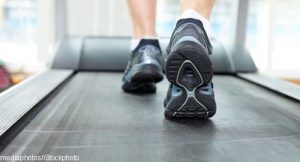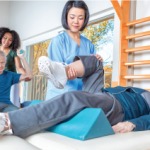 Editor’s note: ACR on Air, the official podcast of the ACR, dives into topics important to the rheumatology community, such as the latest research, solutions for practice management issues, legislative policies, patient care and more. Twice a month, host Jonathan Hausmann, MD, a pediatric and adult rheumatologist in Boston, interviews healthcare professionals and clinicians on the rheumatology front lines. In a series for The Rheumatologist, we provide highlights from these relevant conversations. Listen to the podcast online at acronair.org, or download and subscribe to ACR on Air wherever you get your podcasts. Here we highlight episode 30, Importance of Physical Activity for People with Rheumatic Diseases, which aired on June 7, 2022.
Editor’s note: ACR on Air, the official podcast of the ACR, dives into topics important to the rheumatology community, such as the latest research, solutions for practice management issues, legislative policies, patient care and more. Twice a month, host Jonathan Hausmann, MD, a pediatric and adult rheumatologist in Boston, interviews healthcare professionals and clinicians on the rheumatology front lines. In a series for The Rheumatologist, we provide highlights from these relevant conversations. Listen to the podcast online at acronair.org, or download and subscribe to ACR on Air wherever you get your podcasts. Here we highlight episode 30, Importance of Physical Activity for People with Rheumatic Diseases, which aired on June 7, 2022.
Rheumatologists know that physical activity is essential for their patients. The challenge can be finding the exercise that works best for that patient and getting them started. That’s where professionals in both physical therapy (PT) and occupational therapy (OT) can help.
Dr. Hausmann, ACR on Air podcast host and a pediatric and adult rheumatologist in Boston, discussed physical activity for people with rheumatic diseases with Kim Steinbarger, PT, MHS, DHSc, and Talitha Black. Dr. Steinbarger is a physical therapist and assistant professor at Husson University, Bangor, Maine. She chairs the ARP Practice Committee and is a member of the ARP Executive Committee. Dr. Steinbarger has also lived with rheumatoid arthritis for more than 30 years. Ms. Black is an occupational therapist at Children’s Hospital Los Angeles, as well as a patient educator and advocate for the Arthritis Foundation, Scleroderma Foundation and the ARP.
A Helping Hand to Get Started
Starting and maintaining physical activity may pose challenges for children and adults with rheumatic diseases due to pre-existing pain. Dr. Hausmann says, “When patients see me in clinic, the last thing they want to do is exercise because their joints hurt.”
That’s actually the perfect time to refer patients to PT and OT, Dr. Steinbarger notes. “We can walk through their life with them and figure out where they can fit that physical activity into their lives,” she says.
Physical therapists are movement specialists who study joints, muscles, strength and range to help assess how to make those better. Occupational therapists help patients with everyday activities, such as dressing, showering and making dinner. They also help integrate physical activity into daily schedules and routines. Hand skills are within the domain of OT and sometimes PT.
When to Refer
The (JIA) conditionally recommends PT and OT in addition to concomitant pharmacologic therapy.1 But some children with JIA may already exercise a lot or don’t have major joint issues, leading Dr. Hausmann to ask when to refer these patients to PT or OT.


